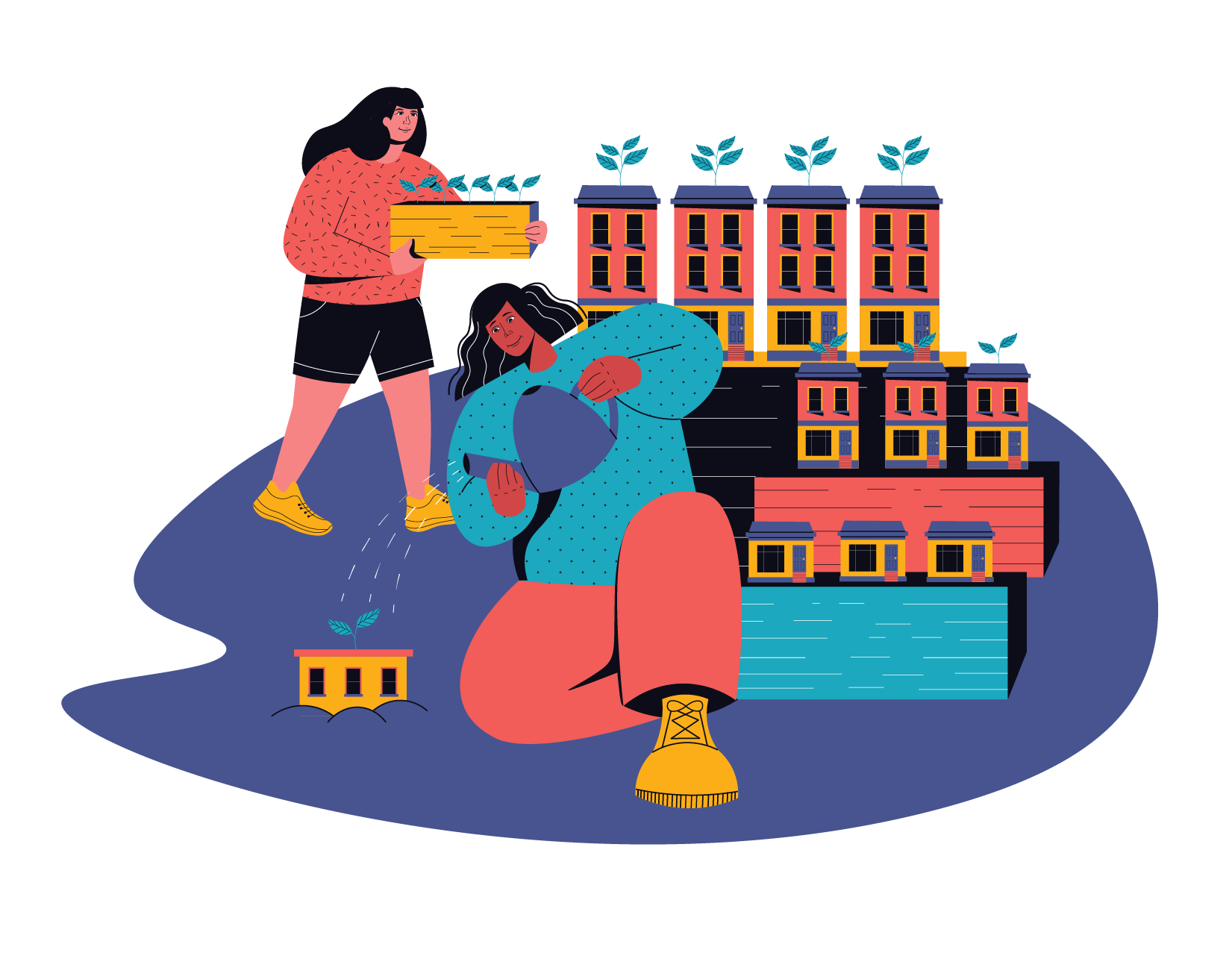Ensure Place-based Inclusion and Create Resilient and Equitable Communities
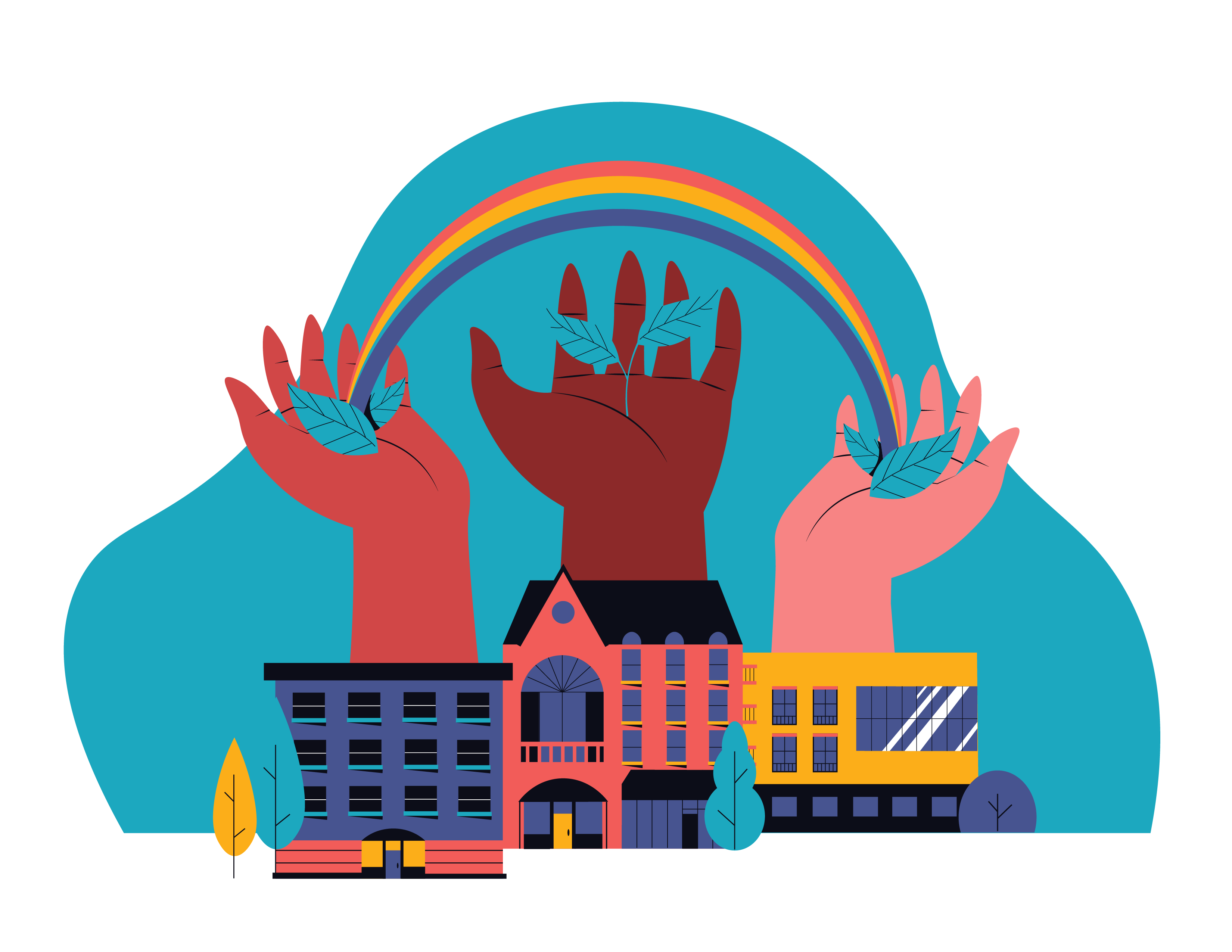 Within the region, Ramsey County remains a relatively affordable place for people to rent or own a home. Yet we are seeing that market pressures and the economic impacts of the COVID-19 pandemic are creating new housing cost challenges including greater housing instability for many households. Ensuring that all current and future households across the county have access to affordable housing choices –whether they rent or own; whether they have a family, are college students, empty-nesters, or are in other phases of life – is critical to our shared long term economic health and prosperity.
Within the region, Ramsey County remains a relatively affordable place for people to rent or own a home. Yet we are seeing that market pressures and the economic impacts of the COVID-19 pandemic are creating new housing cost challenges including greater housing instability for many households. Ensuring that all current and future households across the county have access to affordable housing choices –whether they rent or own; whether they have a family, are college students, empty-nesters, or are in other phases of life – is critical to our shared long term economic health and prosperity.
Prior to the COVID-19 pandemic, home values and rents were rising across the county. Across all income levels and housing types, the housing market did not include enough inventory to meet demand. Too many Ramsey County households are cost-burdened, meaning they are paying more than 30% of their annual income for housing. The market is not building enough housing to meet the demand from seniors, service workers, and others in lower-paying professions, or for those with disabilities or who make less than $25,000 annually (i.e. 30% of the area median income). This challenge is anticipated to grow, placing further strain on the housing market and county services for all households. There is a growing need to provide supportive services to ensure homelessness is rare, brief, and non-recurring. Additionally, the data finds that Black, Brown, Asian, and Indigenous households face the greatest disparities in terms of housing cost burden, homeownership, and income levels. These disparities reflect decades of racial bias within governmental policies and financial services, and the extraction of land and homes from Indigenous peoples and Black households without fair compensation. Addressing these needs and disparities benefits all Ramsey County residents and builds broader community wealth.
Between 2014-2019, approximately 1,400 total affordable and market-rate units were built annually, with about one-third of these being affordable units. Simply put, not enough new housing is being built. The shrinking supply is pushing up rents and home values and creating an extreme housing cost burden for low-income families. At the current pace of new construction, it would take more than 21 years to build enough units to provide an affordable home for those very low-income households living in the county today.
Over 65,000 households in Ramsey County spend more than 30% of their income on housing. Within these households, most of which are renters, roughly 45% are extremely cost-burdened and spend more than half of their income on housing. Within the larger metropolitan region, Ramsey County offers some of the most affordable neighborhoods. However, much of this "naturally occurring affordable housing" (NOAH) is the result of aging, unsafe housing stock where occupants may face overcrowding, exorbitant energy costs, and exposure to health contaminants. Approximately 6 out of every 10 affordable units are located within Saint Paul. Across Ramsey County, 61% of the NOAH rental units are in buildings that are at least 50 years old, and only 8% are in buildings that are less than 10 years old.
Preserving currently affordable housing while improving its condition is a key priority. Providing funding for the preservation of units that can help keep rents low, support energy efficiency and other modifications, and tighten requirements around quality maintenance are some of the multitudes of policy and programmatic levers explored in the section below. Presently affordable housing includes subsidized and unsubsidized rental housing. Current estimates are that 3,205 Low Income Housing Tax Credit (LIHTC) units will expire by 2030, further reducing the availability of affordable housing. When targeting county preservation resources, a priority is on key transit and economic corridors that provide affordable access to economic opportunity.
About the Artist - Mayumi Park
 I am someone who regularly thinks about housing issues and has the tendency to see reality through a figurative lens. My illustrations lean heavily on metaphorical elements in order to present my creative interpretation of the actions Ramsey County is taking to create a more equitable future.
I am someone who regularly thinks about housing issues and has the tendency to see reality through a figurative lens. My illustrations lean heavily on metaphorical elements in order to present my creative interpretation of the actions Ramsey County is taking to create a more equitable future.
Connect
www.mayumipark.com
Instagram: @mayumipark

NOAH Units at 30-80% AMI
Count of NOAH Units in High-Frequency Transit Corridors
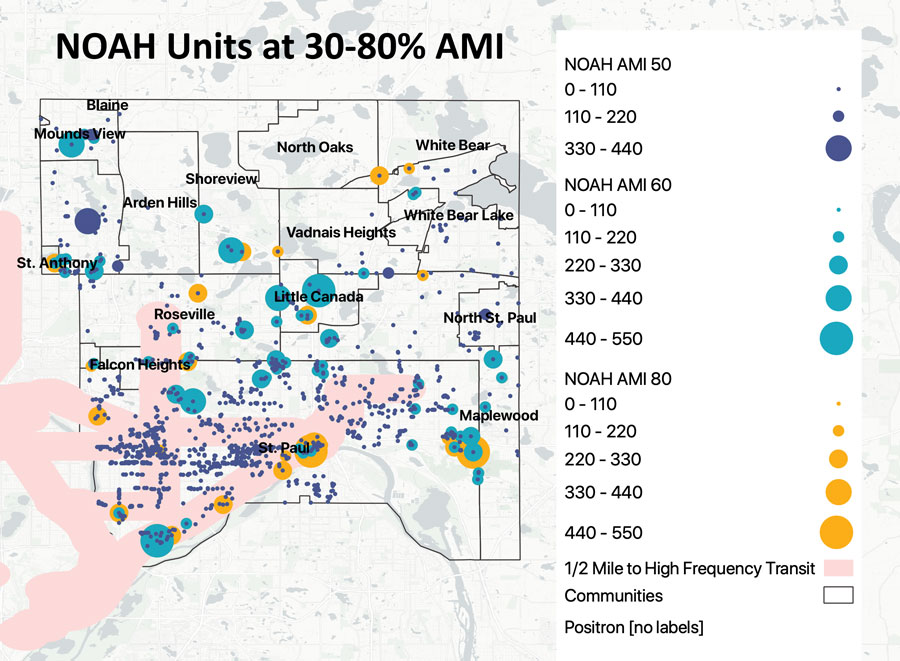 This map shows geographic location of market-rate, or ‘naturally-occurring affordable housing’ (NOAH) units. The accessibility of NOAH units to transit and work are critical factors in prioritizing housing for preservation. The table to the right shows the number and type of NOAH units within a half-mile buffer of the High-Frequency Transit Network. A four-person household earning $31,000 (30% AMI) is cost-burdened if the monthly rent exceeds $775. A four person household earning $78,500 (80% AMI) is cost-burdened if the monthly rent exceeds $1,963.
This map shows geographic location of market-rate, or ‘naturally-occurring affordable housing’ (NOAH) units. The accessibility of NOAH units to transit and work are critical factors in prioritizing housing for preservation. The table to the right shows the number and type of NOAH units within a half-mile buffer of the High-Frequency Transit Network. A four-person household earning $31,000 (30% AMI) is cost-burdened if the monthly rent exceeds $775. A four person household earning $78,500 (80% AMI) is cost-burdened if the monthly rent exceeds $1,963.
The county is committed to increasing affordable housing supply for the lowest income households where the need is greatest.
Improving pathways to homeownership, especially for Black, Indigenous, Latinx, and Asian residents will address racial wealth disparities that currently exist. Together, these strategies help to create greater prosperity for all county residents and localities. Ramsey County’s Community and Economic Development Department will lead this work.
The county is also committed to housing stability for our most vulnerable residents. There is a steep price for inaction. More than 500 evictions occur in a normal year, costing state and county taxpayers $13 million. During the 2008 recession, evictions rose to nearly 3,300, costing nearly $28 million6. Heading Home Ramsey supports the county’s commitment to HUD’s Continuum of Care program designed to end homelessness. Ramsey County believes that housing stability is fundamental to a person’s ability to thrive economically and socially. The new Housing Stability Department will lead the county’s work in this area.
Housing Opportunity by the Numbers
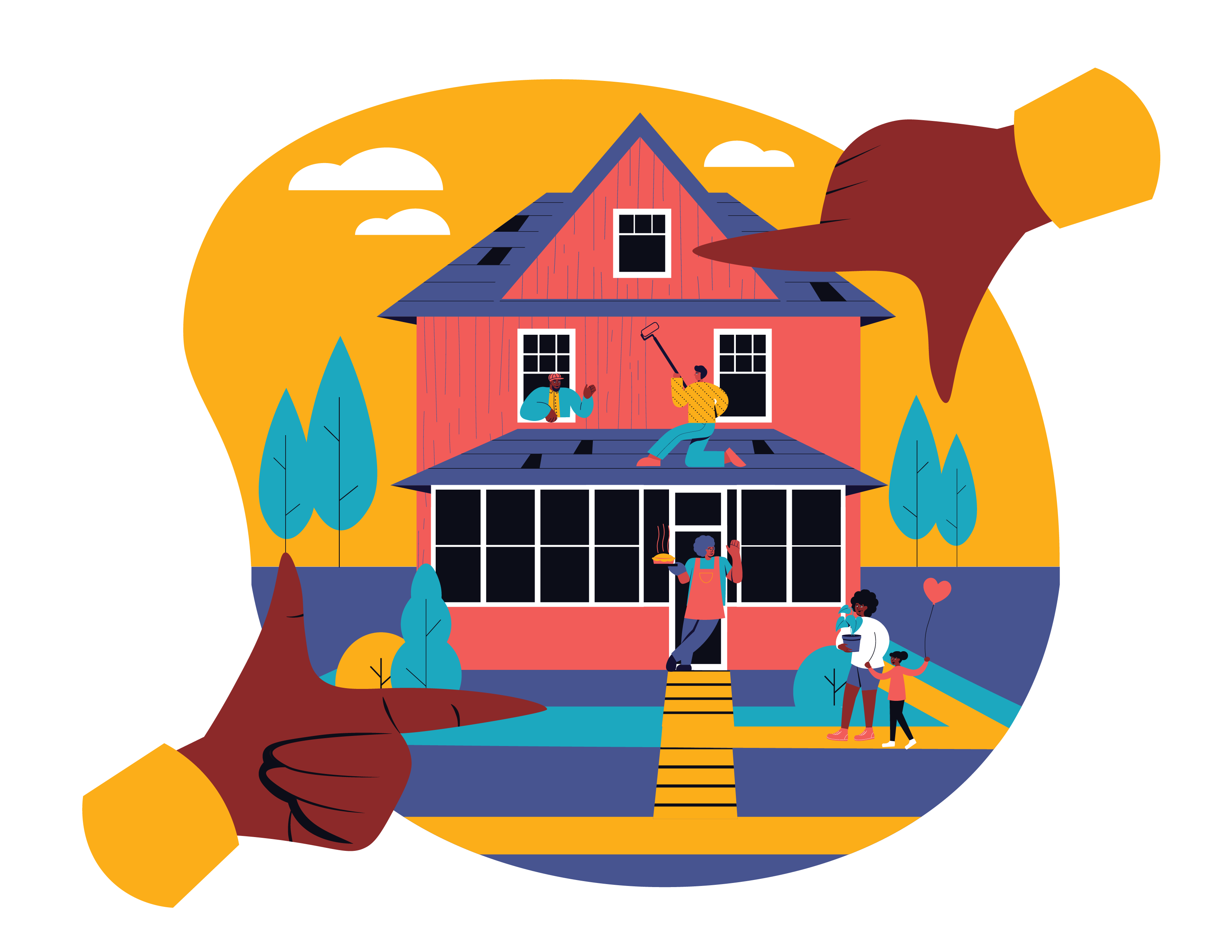 Current Condition
Current Condition
- Nearly 1 in 2 renters are cost-burdened, nearly 1 in 4 renters is extremely cost-burdened, and nearly 1 in 5 owners is housing cost-burdened.
- The majority of these cost-burdened households are working age, renters, and Black, Latinx, Asian, and Indigenous households.
- Existing need is greater than the current affordable housing supply. 33,395 people live in subsidized housing compared to 77,330 people in poverty, and 14,613 households live in subsidized housing compared to 29,528 severely cost-burdened households.7
- Redlining and historic wealth extraction have contributed to the affordable housing problem.
Estimated Need
- There is an existing need for at least 15,000 additional affordable units for households at or below 30% area median income (AMI). This is projected to increase and includes different housing types such as transitional housing and permanent supportive housing as well as two- and three+ -bedroom units.
- Ramsey County has +/- 35,300 NOAH rental units affordable at 80% of AMI. Of these, 14,800 NOAH rental units are two bedrooms or more. Preservation of these existing affordable rental units is critical. 10,510 units are within half a mile of the high-frequency transit network (HFTN) but 69% of these units are studios and 1 bedroom units8.
- There are less than 22,000 owner units affordable below 50% AMI. If these units are lost, the cost to replace them would be 3-12 times the cost of preservation.
- Reducing commuting time by an average of 10 minutes by increasing infill development can save up to $217 million.
Target
- An Affordable Housing Trust Fund seeded with 10 million dollars could spur the creation of 500 to 1,000 new affordable units per year.
- Additionally, 800 to 1,600 NOAH rental units could be preserved with support from the Affordable Housing Trust Fund.
Cost-Burdened Households by Race and Ethnicity
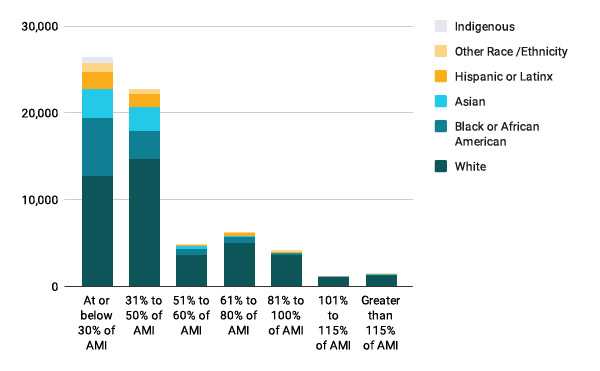
Low-income Ramsey County households are cost-burdened. Minority households that are cost-burdened are overwhelmingly earning 50% AMI or lower. The majority of cost-burdened households are white, but minority households are more likely to be cost-burdened. Among Black households, 48% located outside St. Paul are cost-burdened yet they only represent 4% of all cost-burdened households in Ramsey County.
Higher Growth Communities
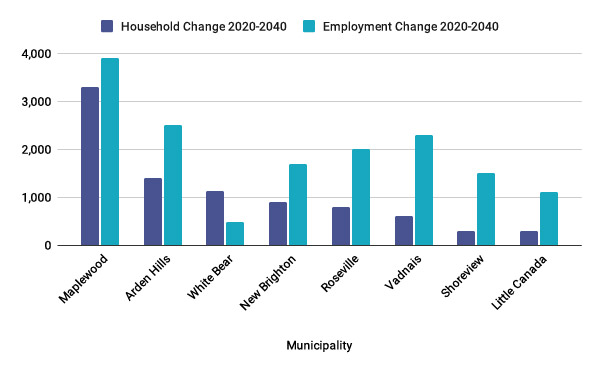
Communities with higher employment growth may need more affordable housing and transit service to support the job growth. These communities will have a higher housing costs making housing less affordable Saint Paul is projected to add 12,700 households and 18,800 jobs by 2040.
6: Based on analysis of EvictionLab data for Ramsey County from 2000 to 2016. Estimates of the costs are derived from the University of Arizona Cost of Eviction Calculator.
7: US Department of Housing and Urban Development’s A Picture of Subsidized Households, 2018.
8: Voucher payment standards vary by the age of the project, number of bedrooms, and household size. GIS Analysis of the data conducted by Fourth Economy.
Current Economic Conditions Shaped by Past Policy
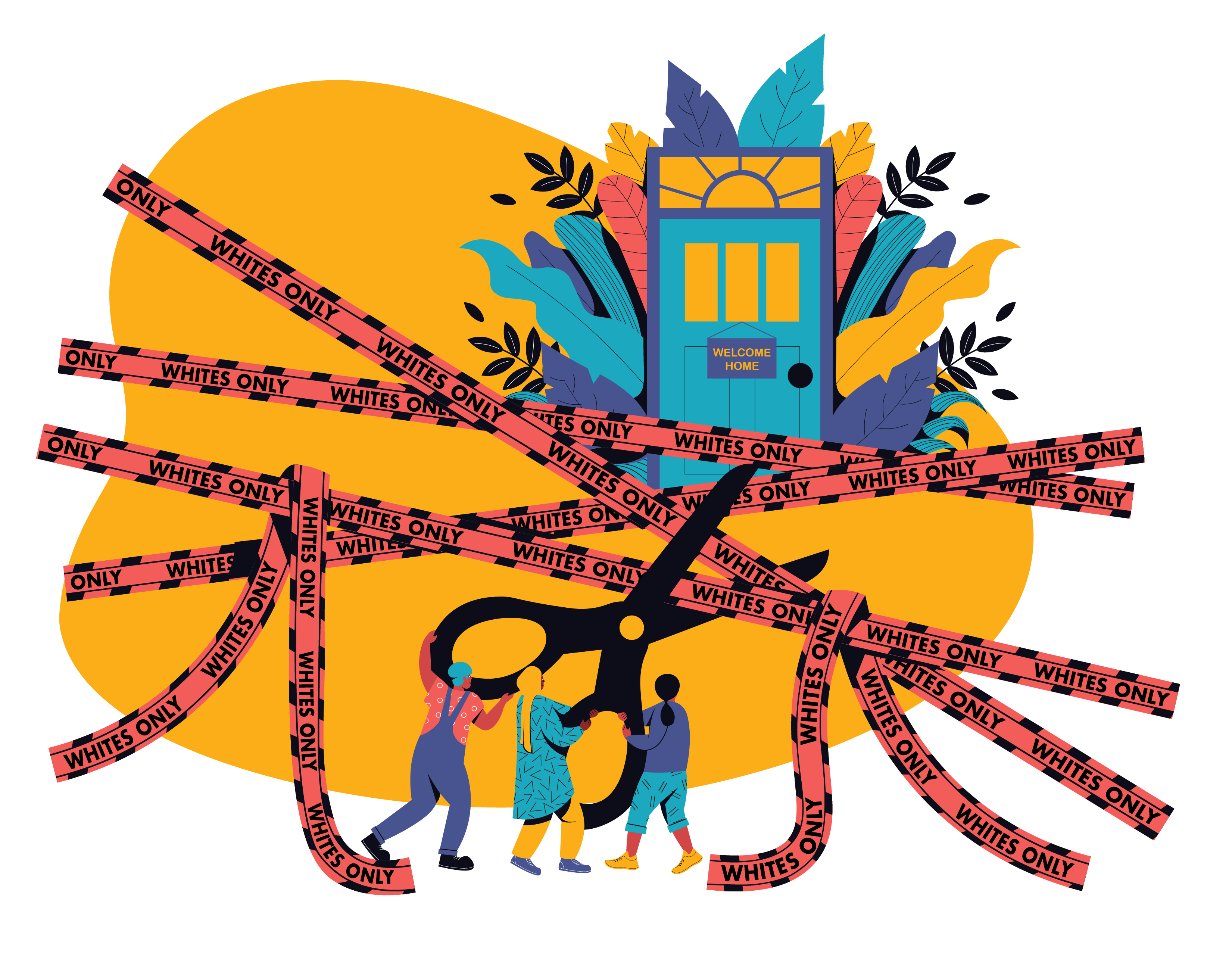 The current levels of poverty and disinvestment that we see impacting our residents today began decades ago. In the 1930s and 1940s, the Home Owners’ Loan Corporation, a federal government agency created as part of the New Deal, mapped cities around the United States according to the level of perceived financial risk associated with a neighborhood. These maps generally color-coded neighborhoods in a hierarchy with green for “Best”, blue for “Still Desirable”, yellow for “Definitely Declining” and red for “Hazardous”. A variety of factors were stated to contribute to these colors including the ethnic and racial make-up of residents. The marking of areas in red (“redlining”) was a racist practice that effectively denied people of color access to credit from lending institutions for decades, while other discriminatory practices barred people of color from obtaining mortgages in higher rated neighborhoods.
The current levels of poverty and disinvestment that we see impacting our residents today began decades ago. In the 1930s and 1940s, the Home Owners’ Loan Corporation, a federal government agency created as part of the New Deal, mapped cities around the United States according to the level of perceived financial risk associated with a neighborhood. These maps generally color-coded neighborhoods in a hierarchy with green for “Best”, blue for “Still Desirable”, yellow for “Definitely Declining” and red for “Hazardous”. A variety of factors were stated to contribute to these colors including the ethnic and racial make-up of residents. The marking of areas in red (“redlining”) was a racist practice that effectively denied people of color access to credit from lending institutions for decades, while other discriminatory practices barred people of color from obtaining mortgages in higher rated neighborhoods.
The impact of redlining is visible today in the fact that most “Areas of Concentrated Poverty” where a majority of residents of color are the same St. Paul neighborhoods that were designated as “Definitely Declining” or “Hazardous” in 1934. The legacy of redlining impacts and additional policies such as adding racially-restrictive covenants to real estate deeds directly contributed to the economic conditions of many residents today. While Ramsey County is not unique in this regard, the county leaders are elevating the issue and seeking to address the impacts.
Redlining and Current Property Values
The featured map demonstrates redlining and current property values with the colors representing the original redlining grades and the height of the bars indicate the current property values. While property that was redlined along the Mississippi riverfront increased in value as a result of other investment forces, most redlined areas were never able to achieve increased property values on par with the rest of the County, contributing to a wealth gap that persists today.
The strategies included in this plan seek to mitigate these impacts and to improve land use productivity as identified by Urban3. Urban3’s analysis demonstrated that smart, data-driven planning and decision-making results in more housing and business choices and produces a more resilient and productive financial outlook for cities and for the county.
While this plan will not reverse the impacts of past policies overnight, it does demonstrate the county’s commitment to addressing them. Doing so will enhance and make more equitable the economic conditions of our residents. This, in turn, will strengthen the overall fiscal health of the county.

A More Resilient and Equitable Community - Strategy 1
To meet the defined needs and advance opportunities for Ramsey County residents and businesses these four strategies will be pursued. With each strategy a set of actions can be taken that include investments, policy actions, programmatic actions or coordination.
Strategy 1: Preserve and increase the supply of rental housing units for lowest-income residents
Recommended Actions
2022
Activate a county Housing and Redevelopment Authority (HRA) levy and establish a dedicated fund to support new affordable housing development, including offering gap financing and land acquisition and development funds. Create specific guidelines that align with county housing goals and expectations for the type of projects new resources will fund, including a priority for projects that increase housing supply for households at 30% AMI or below, and commitments to long-term affordability along with county expectations. Continue to partner with Minnesota Housing Finance, Met Council, and city partners to map timing and guidelines focused on other housing programs in order to leverage funding.
Coordinate with state, regional, and local preservation efforts targeted within the county by making strategic investments of county funds in NOAH funding pools, including the NOAH Impact Fund managed by the Greater Minnesota Housing Fund, and exploring new policy options such as tax incentives for NOAH preservation in transit corridors.
Convene monthly meetings with local housing staff to help meet local affordable housing production and policies goals outlined in city comprehensive plans approved by Met Council, including zoning reforms; share emerging practices or policies; and identify potential pipeline projects that may be seeking public funding.
Establish policies for all multi-family housing projects receiving county funding:
- Must accept housing choice vouchers.
- Landlords must agree to partner with organizations that support tenant access to housing for persons with high-risk backgrounds and provide joint annual reporting.
- Prohibit excessive rent increases or additional fees.
This builds on current requirements for CDBG or HOME funded projects.
To respond to the climate crisis, partner wtih utility providers to supply energy efficiency, weatherization, and electrification credits for low income homeowners, owner-occupied housing units, and multi-family affordable housing units that can be accessed during construction and energy retrofit projects to bring down operating costs. Prioritize existing affordable multi-family housing with commitments by landlords to maintain rents at affordable levels.
Identify federal, state, and philanthropic funds and resources to provide flexible support to pilot energy efficiency, weatherization, and electrification investments.
2023
Use HRA funding to incentivize (via corridor planning grants) actions that encourage multi-family zoning in all current or planned high-frequency transit and commercial corridors. Work collaboratively to identify and reduce other regulatory barriers.
Grow the portfolio of small-scale housing developers to increase the number of Black, Latinx, Asian, and Indigenous mixed-use, residential, and commercial developers and identify financial support for these new and existing developers. The county should measure the percentage of funds invested with Black, Latinx, Asian, and Indigenous developers over time to ensure an increased amount of investment year over year and that results are increasing relative to the goal. Coordination can occur with LISC and other philanthropic investors.
Measures of Success
The ECI plan seeks to transform Ramsey County. The following metrics focused on preserving and increasing affordable housing will demonstrate the plan’s impacts:
Increase in affordable housing development • Reduction in cost-burdened households and the closing of the gap between Black, Latinx, Asian, and Indigenous households and all others.
- Preservation of NOAH units
- Reduction in housing-related operating costs
- Increase in multi-family housing near transit corridors, including utilities
- Increase in the number of Black, Latinx, Asian, and Indigenous mixed-use, residential, and commercial developers
“We have to proactively work to preserve [naturally occurring affordable housing] units. Funding sources for NOAH preservation have short timelines and are not nimble enough to be leveraged quickly.” - Resident Participant
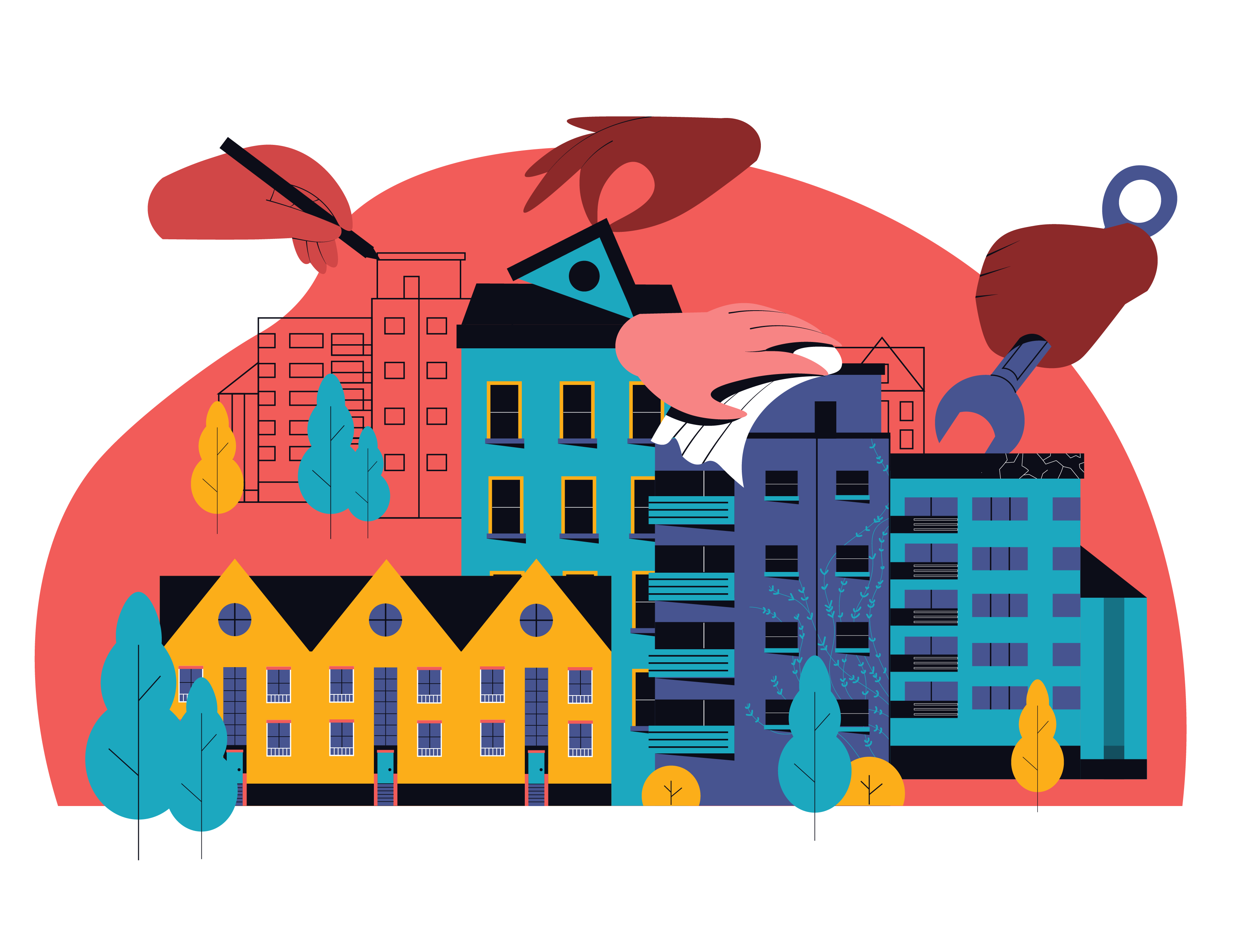
A More Resilient and Equitable Community - Strategy 2
To meet the defined needs and advance opportunities for Ramsey County residents and businesses these four strategies will be pursued. With each strategy a set of actions can be taken that include investments, policy actions, programmatic actions or coordination.
Strategy 2: Expand affordable homeownership opportunities and improve housing stability for communities that have experienced historic wealth extraction
Recommended Actions
2022
Lead effort to align federal resources managed by the county, City of St. Paul, and Metropolitan Council (Community Development Block Grants and HOME funding) to support countywide Economic Inclusion goals and Heading Home Ramsey priorities.
Strengthen Ramsey County’s commitment to homeownership. Promote more utilization of existing homeownership programs from Minnesota Housing for down payments, renovations, homeowner education, and The Community Homeownership Impact Fund.
Using an HRA Levy, or another funding resource, create a funding or tax waiver program to address historic redlining and direct housing investments to Black, Latinx, Asian, and Indigenous families displaced or denied homeownership through government policies, including the destruction of the Rondo Community. This should be done in coordination with the Rondo Community Land Trust, the City of St. Paul, and the St. Paul & Minnesota Foundation who have already been exploring this concept.
Create an Equitable and Resilient Communities Fellowship within the Community and Economic Development department through a partnership with philanthropy and higher education, focused on working with Black, Latinx, Asian, and Indigenous residents and community-based organizations. The Fellow can identify resources available through the MN Homeownership assistance programs, such as down payment assistance and homeownership training for both prospective Black, Latinx, Asian, and Indigenous single-family homeownership and owner-occupant housing including duplexes and triplexes, and create additional resources to provide easier access to available funding programs and county policies to support housing stability, low-income homeowners, and renters. Improve access to housing information (county and partner information) for all residents, including non-English speakers and those with visual disabilities. This should include information on affordable homeownership and down payment assistance programs, homelessness support programs, tenant and landlord rights, and resources for accessing legal or financial help when faced with evictions. Information should be broadly available on the county website and in multiple languages to improve accessibility and transparency of available resources, processes, and partner organizations.
2023
Explore working with cities to adopt disclosure policies that require landlords to provide potential tenants clear information about average annual and monthly energy costs, which will help renters know their full housing costs.
Create an Equitable and Resilient Communities Fellowship within the Community and Economic Development department through a partnership with philanthropy and higher education, focused on working with Black, Latinx, Asian, and Indigenous residents and community-based organizations. The Fellow can identify resources available through the MN Homeownership assistance programs, such as down payment assistance and homeownership training for both prospective Black, Latinx, Asian, and Indigenous single-family homeownership and owner-occupant housing including duplexes and triplexes, and create additional resources to provide easier access to available funding programs and county policies to support housing stability, low-income homeowners, and renters.
Promote coordination between county programs and the city of Saint Paul to extend homeownership and energy efficiency programs to small multifamily housing landlords so they can improve energy efficiency and climate resiliency and further drive down housing costs for renters. Create an additional rehab fund that allows for emergency home repairs. Explore additional resources to support these investments and other energy efficiency, weatherization, and resiliency improvements.
2024
Create an additional rehab fund that allows for emergency home repairs. Explore additional resources to support these investments and other energy efficiency, weatherization, and resiliency improvements.
Measures of Success
The ECI plan seeks to transform Ramsey County, and the following metrics will demonstrate the impacts related to housing stability that the plan is having:
- Increase in Black, Latinx, Asian, and Indigenous homeownership in Ramsey County.
- Increase the range of housing information that is accessible to all Ramsey County residents.
- Increase in the support provided to property owners to perform housing rehabilitation activities that increase overall operating efficiency and reduce costs .
“I would really like to see...truly affordable housing options, both rental and ownership”
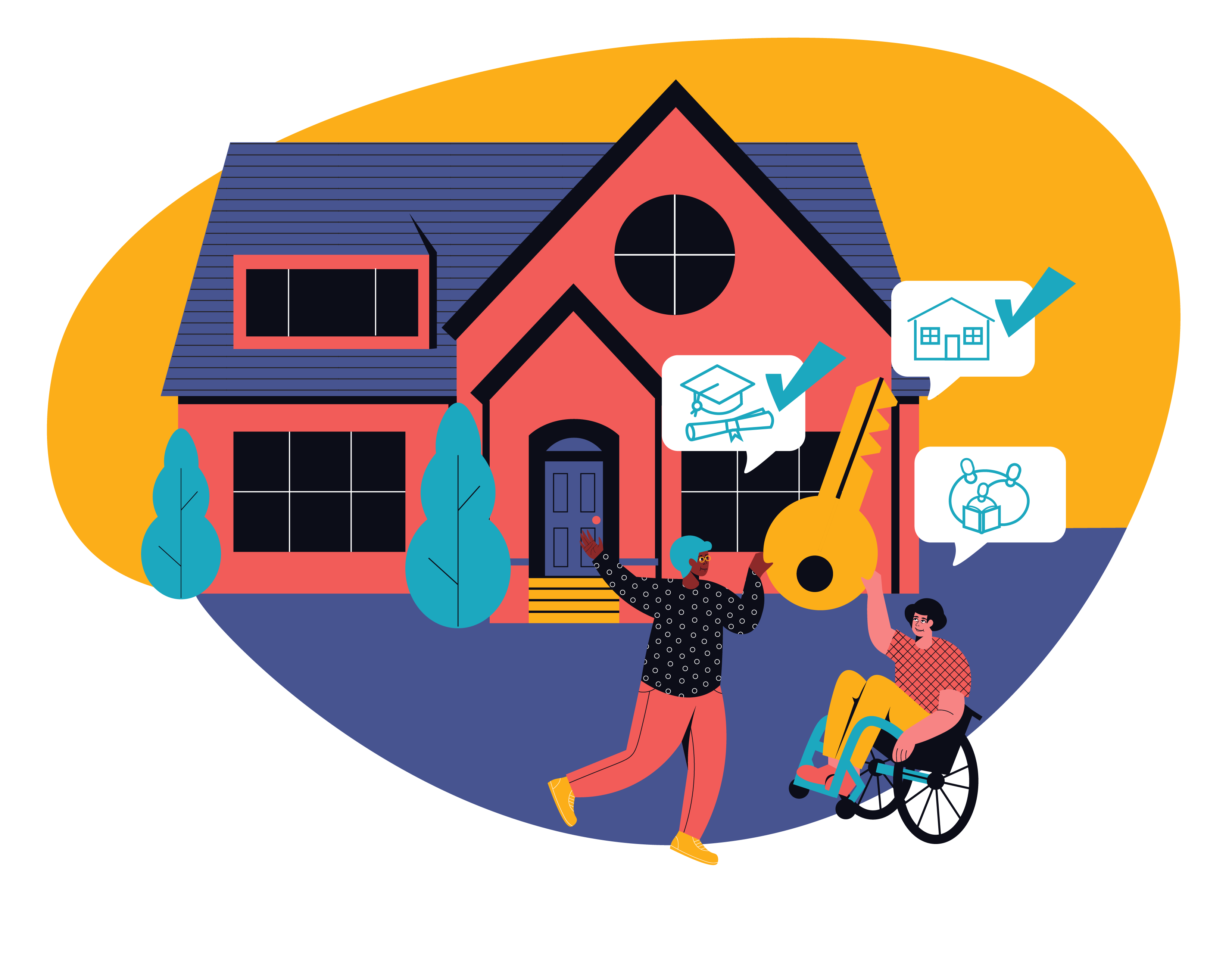
A More Resilient and Equitable Community - Strategy 3
To meet the defined needs and advance opportunities for Ramsey County residents and businesses these four strategies will be pursued. With each strategy a set of actions can be taken that include investments, policy actions, programmatic actions or coordination.
Strategy 3: Foster inclusive economic development within county transit and key commercial corridors
Recommended Actions
2022
Allocate dedicated resources to Minnesota Housing Finance Agency’s Consolidated Request For Proposals to increase the resources and competitiveness of projects located within Ramsey County, particularly those within transit corridors. Identify projects that can be competitive for these funds to support their application and leverage additional resources.
Develop an equitable development framework to pursue the redevelopment of underutilized publicly owned land near transit and key commercial corridors for affordable housing and community-serving needs.
2023
Explore using a portion of the HRA levy proceeds to support the strategic acquisition of underutilized sites for equitable TOD, and utilize publicly owned lands (all government and authorities) for community-serving purposes such as childcare, workforce training, tech equity, and business incubation sites. This can include discounting land for affordable housing when disposing of surplus public lands, prioritizing community-serving needs in RFPs, and marketing those sites that also fall within tax incentive program areas, so long as they are not in environmentally vulnerable areas.
Establish a flexible capital fund to support the acquisition, development, and rehabilitation of naturally-occurring affordable housing with resources targeted to transit corridors and economic corridors with NOAH inventory. This should include both larger multi-family buildings as well as smaller (2-4 unit) buildings that can provide affordable opportunities for wealth accumulation, and are more common in many suburban locations.
Explore, with city partners, a county-funded Right of First Refusal (ROFR) policy to give the first option for purchase of multi-family affordable housing located within TOD areas to non-profit affordable housing developers or community land trusts as a way to preserve long term affordability. ROFR helps to ensure that the HRA levy and other county funds are NOT subsidizing displacement and the conversion of affordable units to market-rate units. “Right of First Refusal, also known as Tenant Opportunity to Purchase, efforts are increasing in their adoption. In 2020 several communities across the country have proposed these types of interventions to preserve affordability and in some cases create wealth-building opportunities. Washington D.C has seen the preservation of over 1,400 units and the creation of 4,400 limited-equity co-op units across 99 buildings as a result of their efforts.
Measures of Success
The ECI plan seeks to transform Ramsey County and the following metrics will demonstrate the impacts that the plan is having in key transit and commercial corridors:
- Increase the number of affordable housing projects and LIHTC credits allocated within Ramsey County communities funded through the Minnesota Housing Finance Agency’s Consolidated Request For Proposals.
- Increase in the number of publicly owned properties in the development process, through the utilization of an equity framework.
- Increase in the number of Naturally Occurring Affordable Housing units preserved along transit and commercial corridors.
“Ramsey County should invest in public transportation or affordable housing near job centers.” - Resident Participant
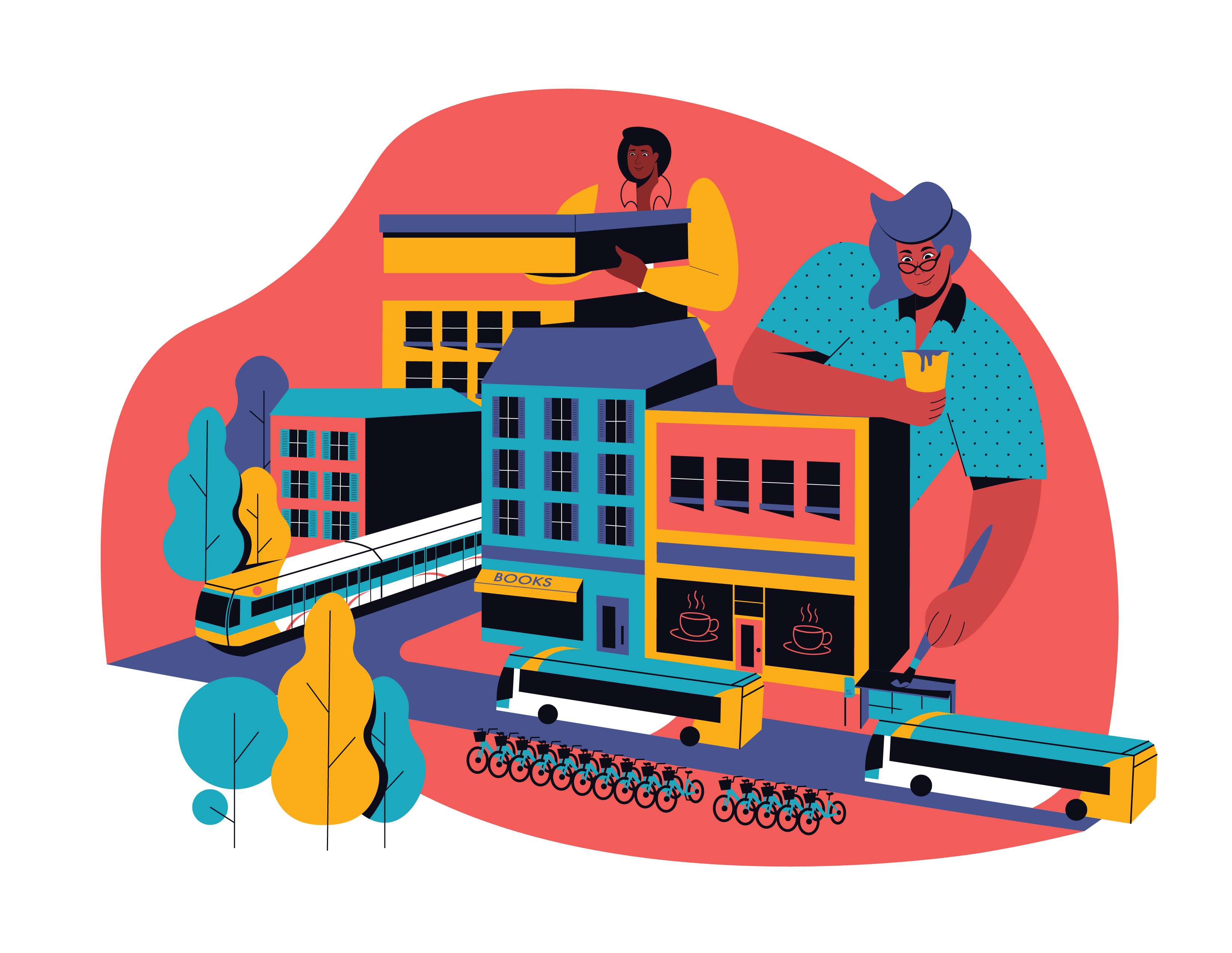
A More Resilient and Equitable Community - Strategy 4
To meet the defined needs and advance opportunities for Ramsey County residents and businesses these four strategies will be pursued. With each strategy a set of actions can be taken that include investments, policy actions, programmatic actions or coordination.
Strategy 4: Support communities in equitable site development
Recommended Actions
2022
Create an equitable development policy for Ramsey County to foster equitable community and site development. Encourage Ramsey County cities to create equitable development policies tailored to their communities.
Explore partnerships with housing allies on coordinated outreach to local mayors, city councils, developers, and the broader public to accelerate local zoning changes to remove exclusionary housing barriers.
2023
Encourage cities to prioritize equitable development to strengthen fiscal health. Examples include: enabling infill development, increasing density, and/or reducing/rethinking minimum parking requirements.
2024
Encourage and incentivize innovation in housing construction techniques to bring down the cost of housing construction and overall maintenance. Support pilot programs/efforts that increase innovation in housing construction techniques that bring down the cost of affordable housing (especially below 80% AMI) construction. This could include supporting regional efforts to pilot modular and alternative construction in Ramsey County, including multigenerational and owner-occupied housing.
Measures of Success
- The ECI plan seeks to transform Ramsey County and the following metrics will demonstrate the impacts that we are having in key providing communities support to implement equitable development:
- Increase in number of communities with defined equitable development policies • Increase in number of communities prioritizing underutilized land.
- Increase in number of units developed via pilot programs that demonstrate lower construction and operating costs.
“Development should happen with the community and anti-displacement in mind.” - Resident Participant
